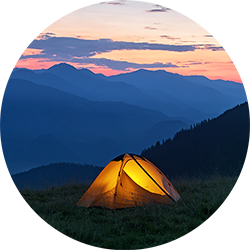City Palace, Jaipur
City Palace is situated right in the middle of Old Jaipur which covers one-seventh of that area. The construction of the palace dates back to 1732, but it still looks fresh and crisp as it always would have been. Visit City Palace Jaipur on exclusive Jaipur travel packages for royal indulgence.The City Palace of Jaipur is a masterpiece of Rajput and Mughal architecture. It is also a testament to the royal heritage and craftsmanship of the bygone era. Built back in the 18th century by Maharaja Sawai Jai Singh II, this historic complex occupies a large part of Jaipur's heart. The palace also showcases an exquisite blend of European and Rajputana architectural styles. Its grand structures, including the Chandra Mahal and Mubarak Mahal, are adorned with intricate carvings, mirrored walls, and ornamental gates. The palace and its attractions reflect the magnificence of the royal nature of Rajasthan.As you step through the Virendra Pol or the Udai Pol, the majestic gates lead you into a world where every corner whispers tales of bravery, romance, and opulence. The inner courtyards, lush gardens, and decorated chambers, such as the Diwan-i-Aam and Diwan-i-Khas, offer a glimpse into the lives of the rulers who walked these halls. The City Palace is not just an architectural marvel but also a cultural hub. It houses museums that exhibit royal costumes, armouries, and artefacts, allowing visitors to journey through time.Moreover, the palace continues to be a residence for the royal family, adding a living chapter to its historical saga. The City Palace, with its rich history, architectural beauty, and cultural significance, remains an iconic symbol of Rajasthan's royal legacy.History of City Palace - Jaipur is considered to be the first-ever city from medieval times, which was planned well. The City Palace is the one-seventh part of the entire old Jaipur. The idea of constructing this beautiful palace erupted in the mind of Maharaja Sawai Jai Singh II. He called the Bengali architect Vidyadhar Bhattacharya and Sir Samuel Swinton Jacob to design the Jaipur city. They infused Mughal and European style of architecture with the traditional Rajputi architecture. The construction began in the year 1729 and lasted till 1732. The entire palace has small palaces, well-maintained gardens, beautifully carved courtyards, open terraces and more.Further Hawa Mahal and Jantar Mantar were added in the premises along with the outer walls of the palace. The complete structure represented the rich culture and heritage of the ancient state. Though this palace was completed, the process of making it more beautiful lasted until the early 20th century. It is still preserved carefully along with all the belongings inside the palace put on display.Architecture of City Palace - The City Palace is a marvellous blend of Rajputi, Mughal and European style of architecture. The design of the property follows the ‘Vastu Shastra’ which is said to be facilitating the art of living and the atmosphere inside the house. The entire palace is structured in ‘Grid Style’ having four gates to enter and exit, namely ‘Tripolia Gate’, ‘Udai Pol’, ‘Virendra Pol’, and ‘Jaleb Chowk’. It also consists of various palaces, gardens, courtyards, temples, terraces, balconies and patios which are beautified by latticework, jali work, carved marbles and inlaid ornamentations. The walls reflect the authentic Mughal style which features distinct murals, mirrors and latticework. A unique feature found in Pritam Niwas Chowk is that it has four gates, which depicts all the four seasons. First one is Mor Gate which portrays Autumn Season, then it is Leheriya Gate which represents spring season followed by Rose gate drawing winters and Lotus gate painting a picture of the summer season. All this makes the entire palace a remarkable structure left behind by history.
Read More






